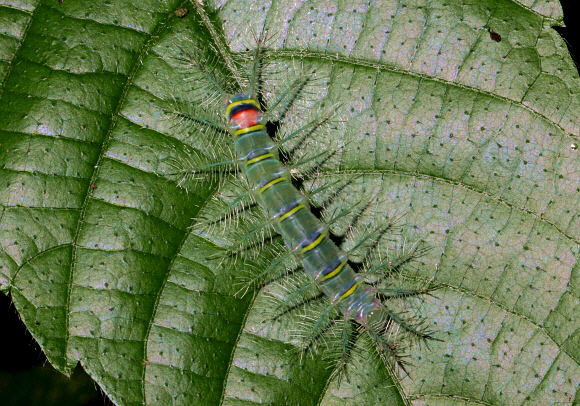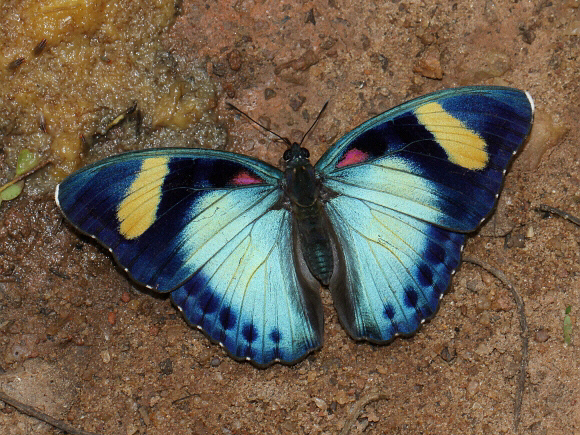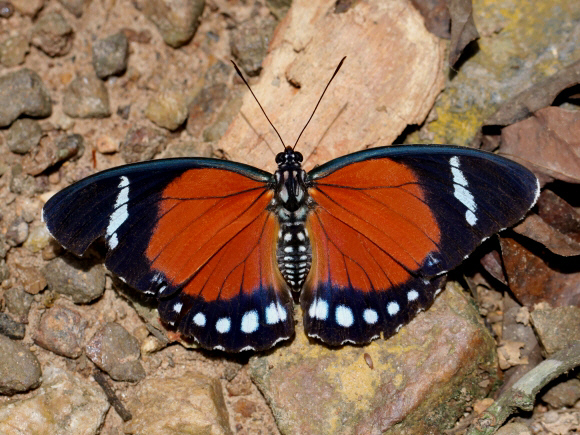
Introduction
The genus Euphaedra is comprised of a yet to be determined number of large and beautiful forest-dwelling butterflies, all found on the African continent. In 1997 Hecq revised the genus and at that time listed a total of 180 species. This figure is challenged by other workers who believe that many of these are merely local forms or subspecies. However in 2012 Hecq produced a further revision of the eleus species-group, describing an additional 12 species, bringing the total in the genus to 192.
When working in the field it is immediately obvious that there are a huge number of specimens that are noticeably dissimilar to any of the insects illustrated by Hecq but it is unclear whether these are examples of intra-specific variation, distinct taxa or hybrids.
All Euphaedra species share a common wing shape. Most have a similar pattern on the upperside – typically the basal areas of the wings (particularly the hindwings) have large suffused patches of metallic blue, green, orange, or red. Most species also have a cream or orange sub-apical bar. The undersides are usually some shade of yellow or green, marked with black spots and streaks that vary in intensity and configuration according to taxon and locality. Many species also have beautiful pink patches or streaks on the underside hindwings.
The Euphaedra larva depicted above has not yet been identified but adults of ceres, medon, hebes, edwardsii, eleus, eupalus, and themis are regularly recorded at the site where it was photographed. Euphaedra themis and Euphaedra eleus are both illustrated below:
Habitats
This larva was found in rainforest at an elevation of about 200m.

Lifecycle
The larvae of all Euphaedra species are green, and adorned with long multi-branched lateral spines which are appressed to the leaf on which they are resting. The lateral spines are extremely efficient at breaking up the outline of the larva and hiding its shadow – a feature found in many Limenitidinae larvae, and presumed to have evolved for camouflage purposes. It is puzzling therefore that larva also has conspicuous yellow and pink markings that have the opposite effect. It seems unlikely that the spines serve a defensive function, as the exposed dorsal surface is very vulnerable to attacks from parasitoid wasps.
Adult
All Euphaedra species share a common wing shape. Most have a similar pattern on the upperside – typically the basal areas of the wings (particularly the hindwings) have large suffused patches of metallic blue, green, orange, or red. Most species also have a cream or orange sub-apical bar. The undersides are usually some shade of yellow or green, marked with black spots and streaks that vary in intensity and configuration according to taxon and locality. Many species also have beautiful pink patches or streaks on the underside hindwings.

